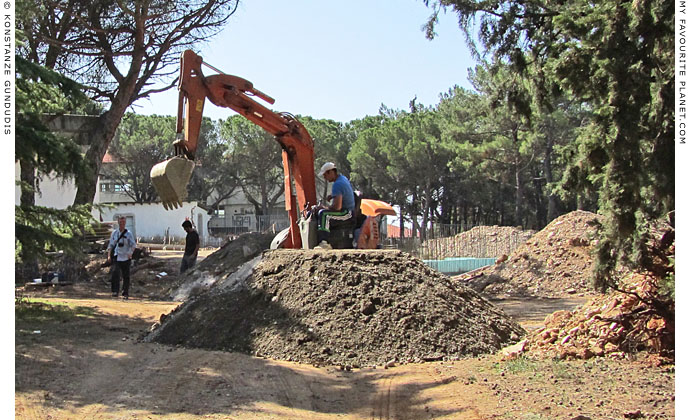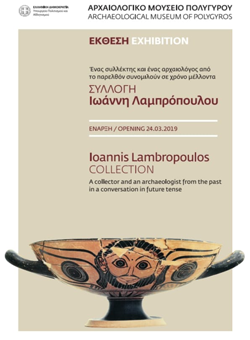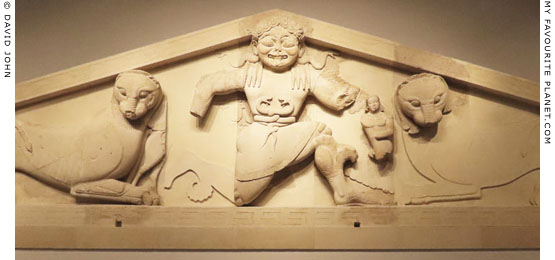|
|
|
| My Favourite Planet > English > news |
| News on My Favourite Planet |
|
| |
| 2020 |
| |
Love in the time of Corona
21 April 2020
The Covid 19 pandemic is keeping peope around the planet away from work and school, sitting at home, twiddling our thumbs and wondering where this new reality will lead us.
The mysterious Edwin Drood makes a rare and timely appearance, to tell a tale of an illness that withered a land, probably not so long ago or too far away.
A fable for our times, Drood's The Lender of Last Resort tells of a dread epidemic, an impoverished population, an aged usurer, a jaded priest, a small girl and a piece of paper that changes everything.
"A small thing can change destinies: a horseshoe, some loose gravel, a quarter sovereign – but a piece of paper can change them the most. And it is strange indeed how such a document may alter not only the future, but also the past."
Spoiler alarm: the story has a neat twist and a happy end. Light at the end of a seemingly endless tunnel. Stop twiddling your thumbs, and enjoy a good read.
The Lender of Last Resort at Edwin Drood's Column. |
|

The Lender
of Last Resort Edwin Drood's Column |
|
| |
| 2019 |
| |

Construction work on the new archaeological museum in Polygyros, September 2012. |
| |
| Polygyros Archaeological Museum reopens |
| |
9 June 2019
The newly rebuilt Archaeological Museum of Polygyros (Αρχαιολογικό Μουσείο Πολυγύρου), in Halkidiki, Macedonia, greece, was inaugurated on Sunday 24 March 2019 and is finally open to the public again. Although only a fraction of its large collection of ancient objects is currently on display, it is hoped that the exhibition can be expanded by 2020.
First opened in May 1971, it is the largest and most important museum in Halkidiki and houses archaeological finds from sites around the peninsula, including ancient Stageira, Aphytos, Ierissos, Olynthos, Pyrgadikia, Sane, Stratoni and Toroni. Exhibits illustrate human occupation of the area through the Palaeolithic, Neolithic, Geometric, Archaic, Classical, Hellenistic and Roman periods.
The museum was closed in 2011 for renovation and the building of a large extension, originally scheduled to be completed by the end of 2013. However, the reopening was postponed several times and then suspended indefinitely. The cause was lack of funds, mainly due to the Greek economic crisis. Although the building itself was completed, not enough of the budget remained for the fixtures and fittings for the display of the museum exhibits (see Museum BOOM at The Cheshire Cat Blog).
In December 2017 the Society of Friends of the Archaeological Museum of Polygyros (Η Εταιρεία Φίλων του Αρχαιολογικού Μουσείου Πολυγύρου) was founded by museum staff, local people and other interested individuals and organizations in cooperation with the Ephorate of Antiquities of Chalkidiki and Mount Athos. Fundraising for such projects in Greece at present is an almost impossible task, but due to the determination and hard work of the society they have now managed to raise sufficient funds through donations and sponsorships to reopen part of the museum.
The current exhibition is titled "Ioannis Lambropoulos Collection: A collector and an archaeologist from the past in a conversation about the future" (Συλλογή Ιωάννη Λαμπρόπουλο: Ένας συλλέκτης και ένας αρχαιολόγος από το παρελθόν συνομιλούν σε χρόνο μέλλοντα), as a tribute to the antiquities collector Ioannis Lambropoulos and archaeologist Charalambos Makaronas. The substantial Lambropoulos Collection, consisting of around 1,000 artefacts from Polygyros and surrounding areas, was donated to the museum in 1995 by his son Iraklis Lambropoulos.
Despite the importance of the museum to historical research as well as local culture and tourism, the reopening has so far received very little publicity, being reported mainly by local media. The best report I have found so far is by the Orthodoxia News Agency, which also provides some background information on the Lambropoulos Collection and the current state of the museum as an institution:
Εγκαίνια Αρχαιολογικής Συλλογής στο Μουσείο Πολυγύρου (Opening of the Archaeological Collection at the Polygyros Museum), 26 March 2019. At the Orthodoxia News Agency.
We wish the staff of the museum and members of the society the best of luck in their endeavours, and hope that the relevant authorities in Thessaloniki, Athens and Brussels are taking notice.
David John, 9 June 2019
Last updated April 2023.
Read more about Polygyros and its museum in the
My Favourite Planet travel guide to Polygyros. |
|

Poster for the opening of the
Lambropoulos Collection exhibition
in Polygyros Archaeological Museum,
24 March 2019.
See a larger version of the poster
(opens in a new window).
Polygyros Archaeological Museum
Odos Stadiou 1, Iroon Square,
63100 Polygyros.
Tel: (+30) 23710 21330
E-mail: efachagor@culture.gr
Open every day except Tuesday
8:30 - 15:30
Tuesday closed
Tickets:
Summer (1 April - 31 October)
€4, reduced €2
Winter (1 November - 31 March)
all tickets €2 |
|
| |

Yep, the Polygyros Archaeological Museum is (was) definitely closed.
photo: © Konstanze Gundudis 2012 |
| |
 |
The Kaiser and the Gorgon
The Gorgon pediment in Corfu |
September 2019 The green island of Corfu once played an important role in the economic and political rivalries between ancient Greek cities. Today the cultural leftovers of the island state's heyday can be seen at a handful of sites and in the main town's museums.
In December 1910 local people discovered some ancient stone remains on farmland south of modern Corfu town, and in January 1911 the young Greek archaeologist Friderikos Versakis was called in to investigate. He excavated what turned out to be huge, powerful relief images of the Gorgon Medusa flanked by two lions which once adorned the gable of a large temple, built around 585 BC.
Soon after Kaiser Wilhelm II of Germany arrived in Corfu to spend his Easter holiday in the nearby Achilleion, a summer palace he had purchased after its builder and previous owner, Kaiserin Elizabeth ("Sissi") of Austria, had been assassinated in Geneva. Having heard of the excavation he went to visit the site and ended up using his power, wealth and influence to take it over and get Versakis fired from his job. The Kaiser apparently became obsessed with the Gorgon, later claiming the credit for its unearthing, and after the First World War wrote a book on the subject while in exile in the Netherlands.
The episode has been seen as a prime example of cultural imperialism and interference by powerful rulers and states in the affairs of smaller countries. Fortunately, the "Gorgon pediment", as the limestone relief has become known, was not shipped off to the Kaiser's royal museum in Berlin, and is now the star attraction of the Corfu Archaeological Museum.
Read The Gorgon pediment in Corfu in Gorgon Medusa Part 3, at My Favourite Planet People. The illustrated article covers the pediment's history and rediscovery as well as the archaeology of the temple site.
Update May 2020
The Gorgon Medusa page in the MFP People section has been growing in content since 2016 and was becoming far too large for a single web page. It has now been divided into 8 parts on 8 separate pages, arranged thematically, with articles about the Gorgon illustrated by over 300 photos and drawings. Start at Gorgon Medusa Part 1. |
|
|
| Photos and articles © David John, except where otherwise specified. |
 |
Visit the My Favourite Planet Group on Facebook.
Join the group, write a message or comment,
post photos and videos, start a discussion... |
|
 |
| |
|
|
| |
| |
 |
| |
 |
| |
 |
| |
 |
| |
 |
| |
 |
| |
George Alvanos
rooms in
Kavala's historic Panagia District
Anthemiou 35,
Kavala, Greece
kavalarooms.gr
|
| |
Olive Garden Restaurant
Kastellorizo,
Greece
+30 22460 49 109
kastellorizo.de
|
| |
Papoutsis
Travel Agency
Kastellorizo,
Greece
+30 22460 49 286
greeklodgings.gr
|
| |
|